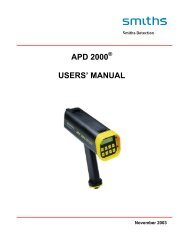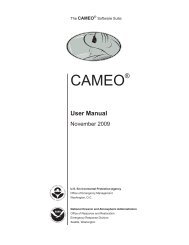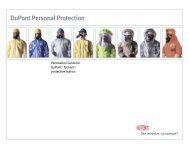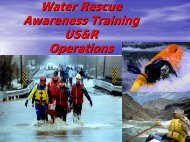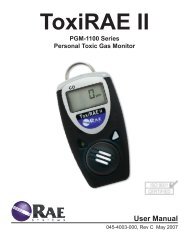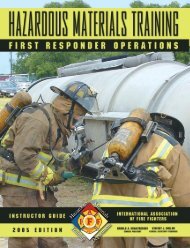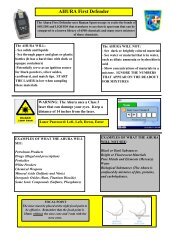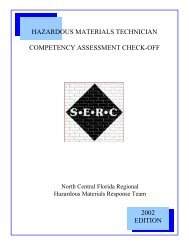Handheld Raman (first defender) - Livonia Professional Firefighters
Handheld Raman (first defender) - Livonia Professional Firefighters
Handheld Raman (first defender) - Livonia Professional Firefighters
You also want an ePaper? Increase the reach of your titles
YUMPU automatically turns print PDFs into web optimized ePapers that Google loves.
IntroductionAs a result of the decline in the availability of commercial and military explosives, homemade explosives(HMEs) are an increasing threat. Readily available ingredients and information on the simple methods ofproduction for these materials have turned HMEs into a primary weapon of choice for terrorist activitiesworldwide. From a safety standpoint, the instability of these materials makes gathering analytical forensicevidence from improvised explosive devices (IEDs) and laboratories a dangerous activity. Furthermore, the linebetween explosives hazards and toxic chemical hazards has been blurred by the use of toxic industrial chemicals(TIC) as weapons by terrorist groups, as well as the use of explosive booby-traps in methamphetamine labs 1 .First responders typically have two options available when encountering explosive materials in the field:■ Remove the unknown materials from the scene,■ Destroy them in place.Each option is complicated with their own safety issues when dealing with unknown chemicals/materials.Specifically, removing a chemical for analysis from a hazardous material (hazmat) or terrorist scenario mayexacerbate the problem owing to the time required to carry out the removal, or movement of the chemicalscould possibly unintentionally spread the hazard. In on site detonation instances, while detonating a device inplace may be the only safe method of disposing of a potential explosive hazard, the explosion destroys anyforensic evidence and other chemical hazards could be released into the environment during the process.What is urgently needed and—in my opinion—is currently available, are small, rugged analytical tools thatmay be brought to the incident scene and decontaminated after use. These instruments provide a logicalapproach to identify and assess the hazard and collect forensic evidence quickly without spreadingcontamination. Essentially these tools should provide through a rapid identification of the unknown material, aclear and accurate assessment of the hazard so appropriate decisions can be made by the <strong>first</strong> responder.<strong>Handheld</strong> instruments employing <strong>Raman</strong> and Fourier Transform Infrared (FTIR) spectroscopy are powerfuland proven analytical methods that provide not only laboratory quality, but on-scene analyses of unknownmaterials. Recent advances in optical packaging and other technologies have transformed these spectroscopicsystems from large laboratory instruments requiring dedicated expert users to handheld, lightweight[



